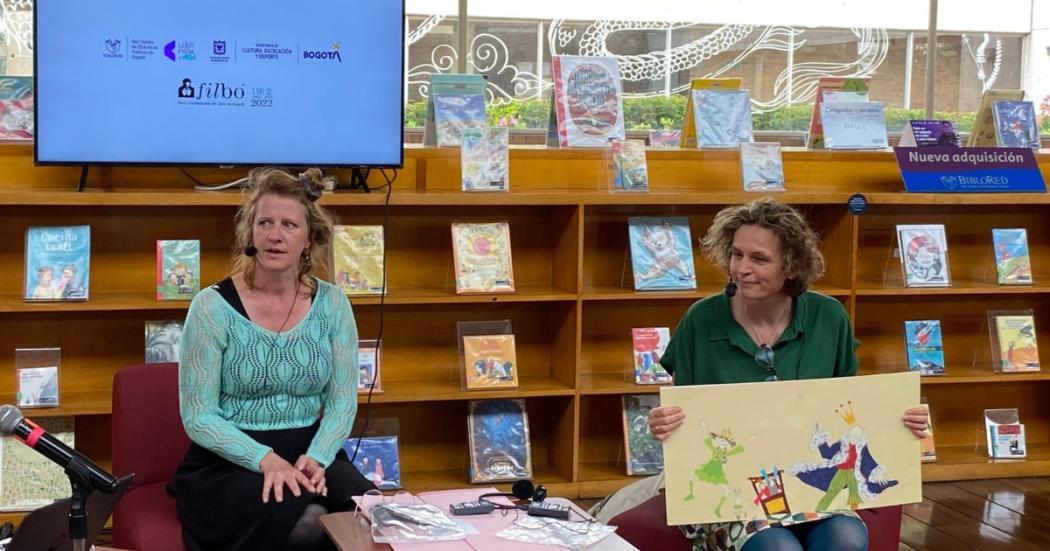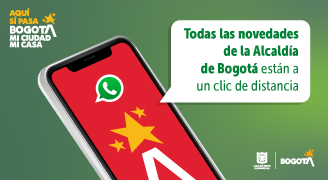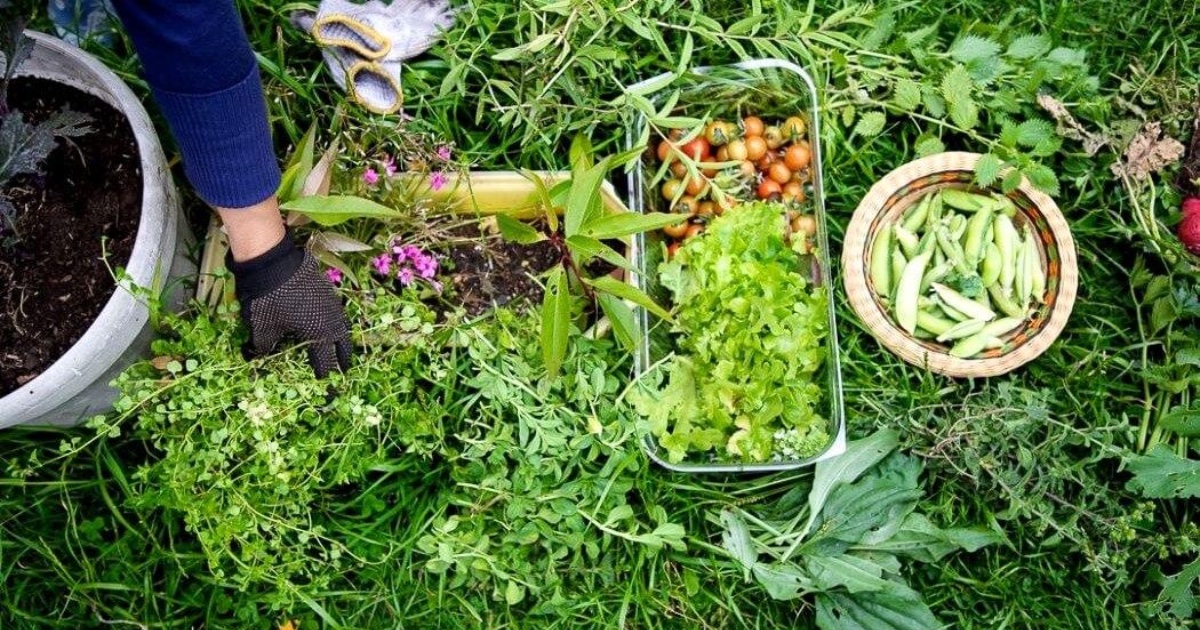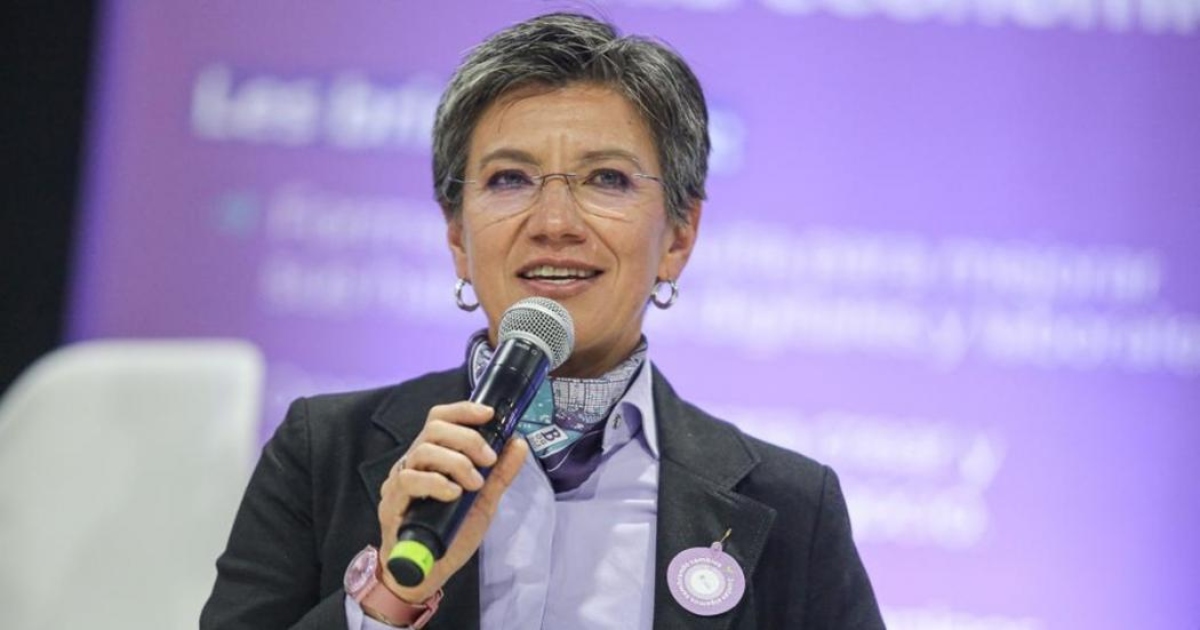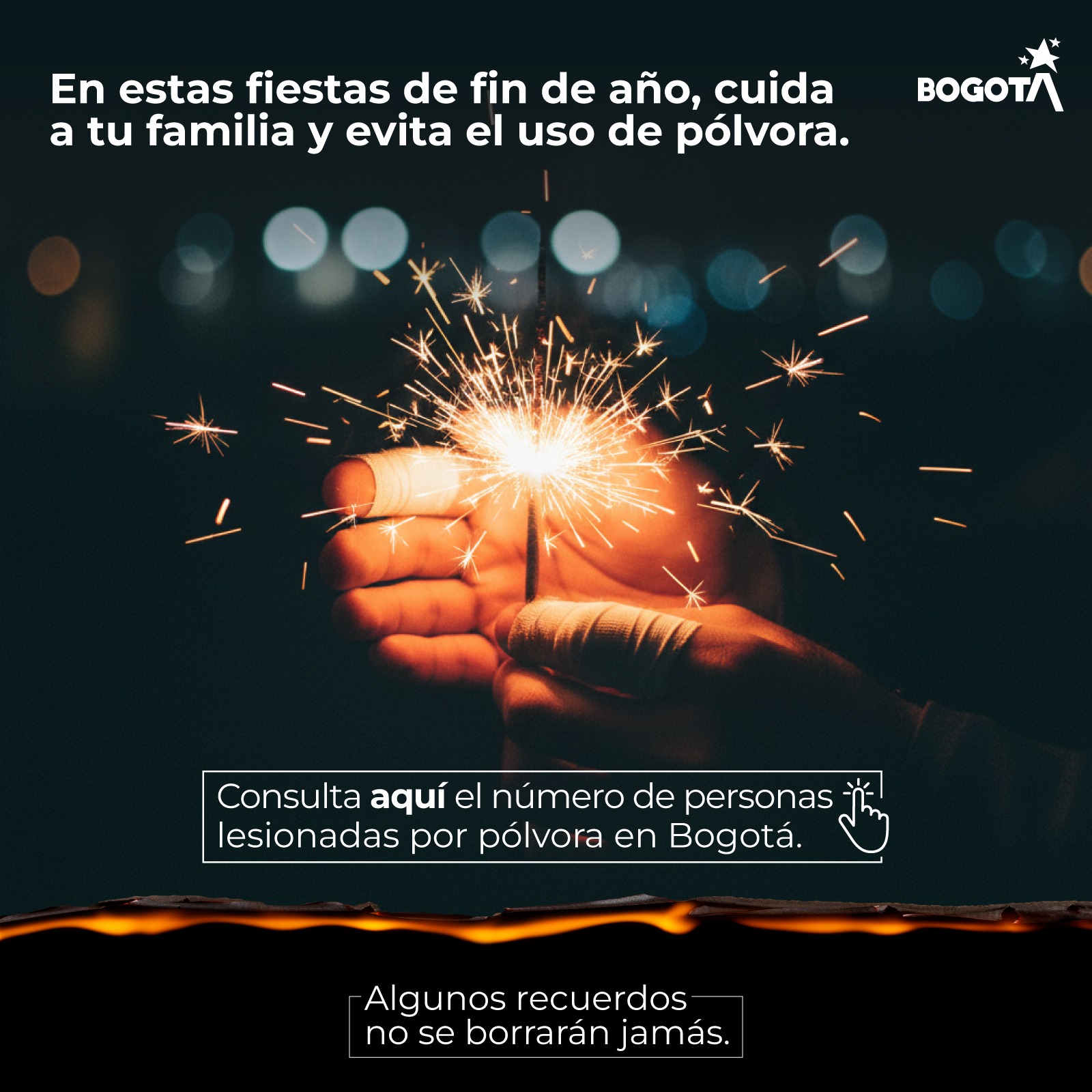The queen and mother of Prince Bertie is tired of ruling so she decides that her son has to get married, thus begins the story of 'King and King', the book written and illustrated by authors Linda de Haan and Stern Nijland who are participating in the most recent edition of the BogotáInternational Book Fair as international guests.
Since its original publication in 2000, this illustrated story has been making its way around the world, becoming one of the first children's books to touch on issues of inclusion and diversity. Although, this was not the only element the authors took into account when creating the book.
Now, two decades later, in this edition of FILBo 2022 as part of the series of activities offered by the District Secretariat of Culture, Recreation, and Sport, the authors developed an activity as part of FILBo City, called "Let's talk about love", in which they told a love story to the attendees and invited both children and adults to represent the love they feel for someone.
In an interview with Portal Bogotá, the authors shared their perspectives on modern fairy tales, out-of-the-ordinary stories, and the importance of talking about love today.
Portal Bogotá: Your talk at the Book Fair is entitled "Let's talk about love". Why that name?
Stern Nijland: Mainly because our book is about love in general. I think it is very important not only for us as authors, but also for the whole world. We have to remember that the positive has more strength than the negative.
Linda de Haan: Yes, I really think it's all about love. Life is about love, whether it is love from parents to their children and vice versa, love to friends, finding a partner... everything is love. We believe it is the most important feeling in the world.
P.B: The story in your book is set up as a fairy tale, why did you choose that style?
S.N.: We grew up with a lot of picture books and stories of classic fairy tales in the style, "Once upon a time", like those of the Brothers Grimm, we wanted to put together something similar. Although now, in retrospect, many of those stories were very stereotypical and we wanted to offer something new.
P.B.: Since you mention offering something new, what inspired you to create this book?
S.N.: We just wanted to make a fairy tale about love that was fun to write and illustrate together.
L.H.: Besides, we already knew that the beginning and the end would be in the style, "Once upon a time and they lived happily ever after", so that was defined. We didn't have a pre-established story, but from then on we were making decisions that seemed more fun or interesting, such as the surprise of the prince falling in love with another prince.
P.B.: Your book has quite a lot of recognition worldwide, did you expect that kind of reception?
L.H.: No, when we wrote and published the book we had not thought about its relevance. It was only later with people's feedback through letters and questions that we realized the weight it carried and the importance of coming to settings like this to talk about it. It's funny because we were really just writing a love story, nothing more, nothing less.
Below is an image of the authors during their participation in FILBo:
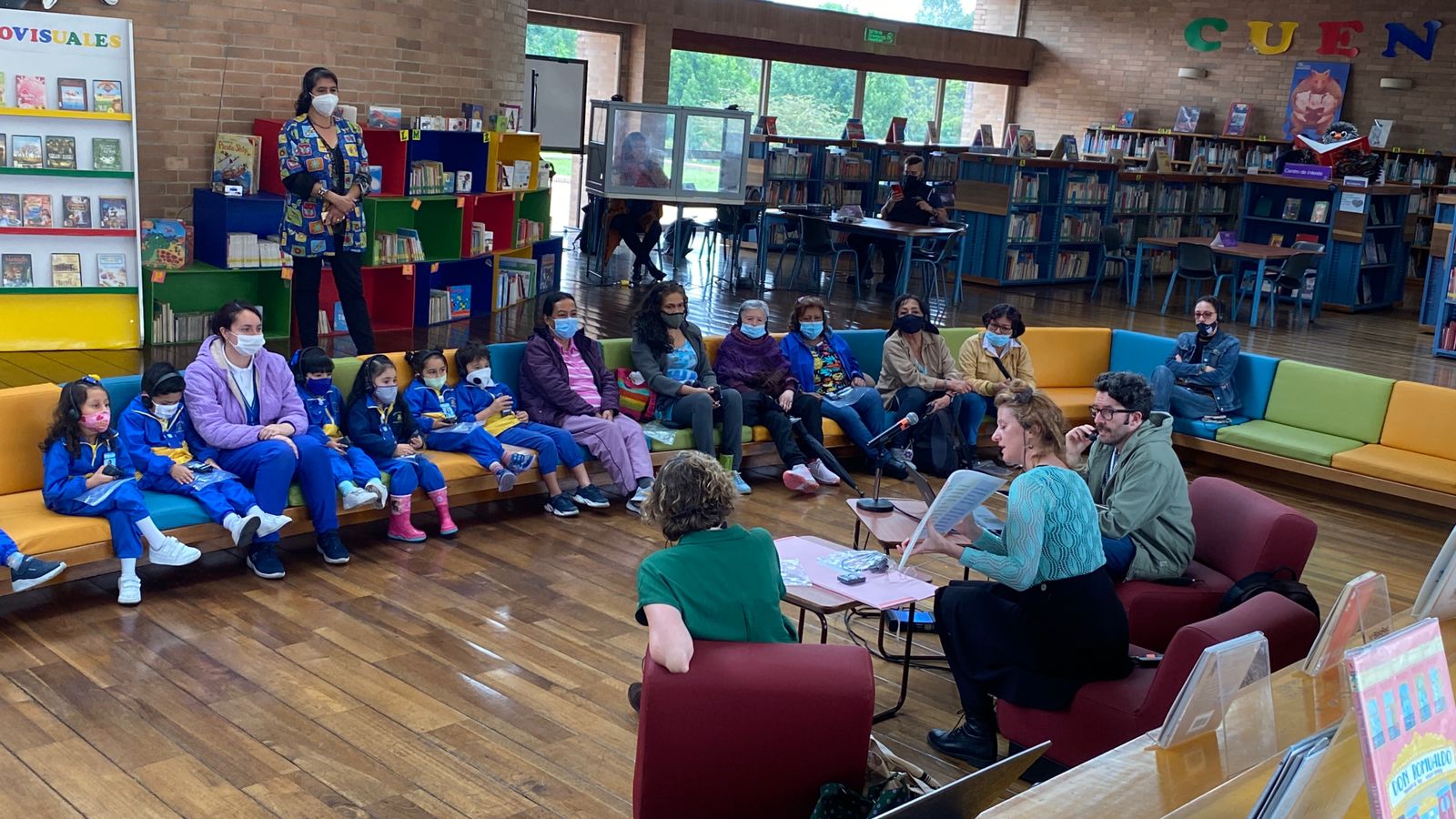
P.B.: The relationship issues you address in your book are not usually common in children's stories. Why did you choose a story like this?
L.H.: In the beginning we just wanted to make a good book that both parents and children could enjoy, but over time we have realized how important it is for children to feel represented. Also, it is important to hear stories of people who are different from you, it helps you understand yourself and others.
S.N.: Children's books and illustrated stories are the basis for early education. Children read and learn. There need to be stories about all kinds of children, and all kinds of customs, families, and cultures. Above all, they must be good stories.
P.B.: Was the original publication of the book rejected at all?
L.H.: No, by that time issues such as equal marriage and adoption were already well received by the majority in the Netherlands.
S.N: Although in certain smaller circles there is still some rejection. Nowadays we see more people who do not agree with seeing same-sex couples and who may get a little upset when talking about it.
P.B.: What do you consider to be the biggest difference between Bogotá and the Netherlands in terms of inclusion?
S.N.: On some level it is easier in our countries to talk about these issues, while in places like here or Mexico it still feels quite a struggle. I think it is a question of culture and its advancement.
L.H.: But you also have to take into account what happens with migration. All kinds of people bring bits and pieces of their own cultures, so it takes time to adjust to the changes that come with that as well in these matters.
P.B.: When you talk about making a good book or a good story, what do you mean?
L.H.: What we've found - which not many authors think about - is that it's good that you have a topic like equal marriage in your book, but it's not enough. If you want to make a book, it has to be a good story first. Lately we've seen a lot of books published solely for touching on LGBTQ+ issues, but that one detail alone is not enough.
S.N.: The important thing is really if it's a good book or if it's a good story. You have to think that you should write multi-layered content, especially when it comes to content for children. Every detail in a children's story must have a well thought out function, these books have to look simple, but be carefully crafted.
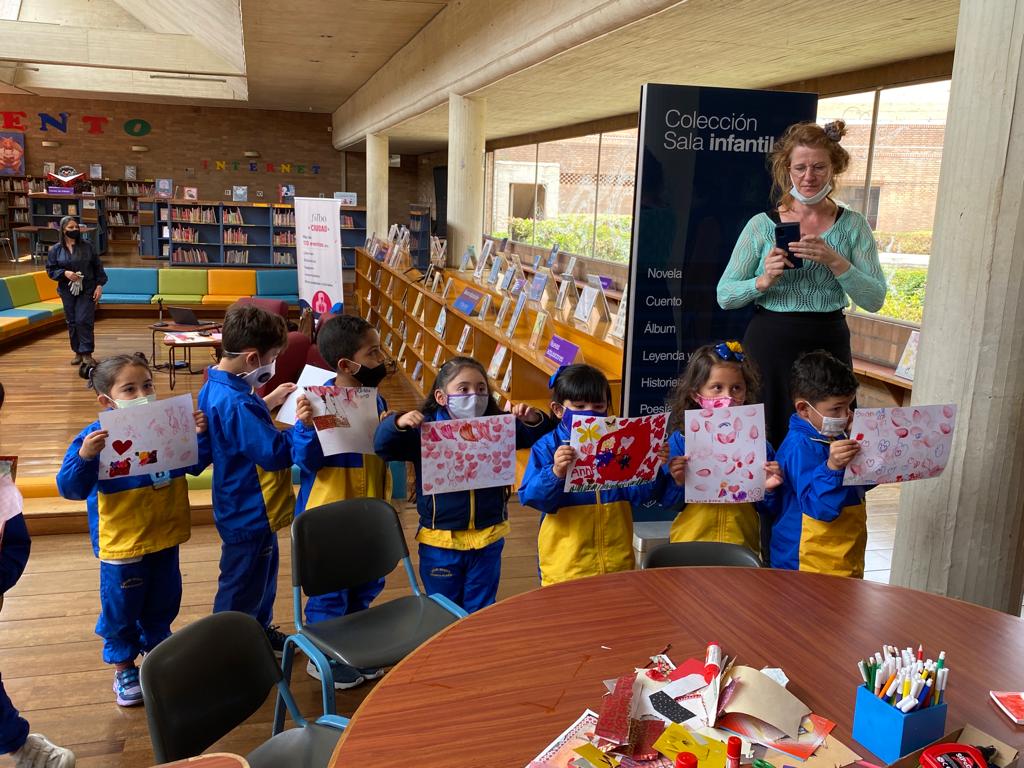
P.B.: Why is it important to come and talk about these issues at events like FILBo?
S.N.: I think times are changing, I would say that 20 years ago it was easier to accept more diverse relationships in our own countries. Society has become harsher and more prejudiced. Although I would like to bring a more positive perspective.
L.H.: Yes, that's why I think it's important to pay more attention to the content of children's literature in a broad sense, because I've noticed that the base is the children, we have to show them the whole range of colors of the rainbow if we want them to be more empathetic.
P.B.: Do you have other types of stories you would like to tell?
L.H.: Although it may not seem like it, we don't just want to write books on the "right" topics. For example, I also worked on a book with philosopher Coen Simon about people who die, a topic that is often considered taboo to talk about with children, but needs to be discussed in an appropriate and honest way.
P.B.: A while ago you made a comment about people who reject books with equal marriage and diversity content, if you could tell them something what would it be?
L.H.: If you are worried about the existence of these stories, I remind you that despite all the stories with traditional couples there are still all kinds of couples, so you shouldn't worry about it.
S.N.: We usually don't directly meet people who reject our book, but in any case you have to keep in mind that you can tell a child what s/he can and cannot do, but you can never tell him/her how to feel or, when s/he grows up, whom to love. It is impossible to control a person's feelings.
